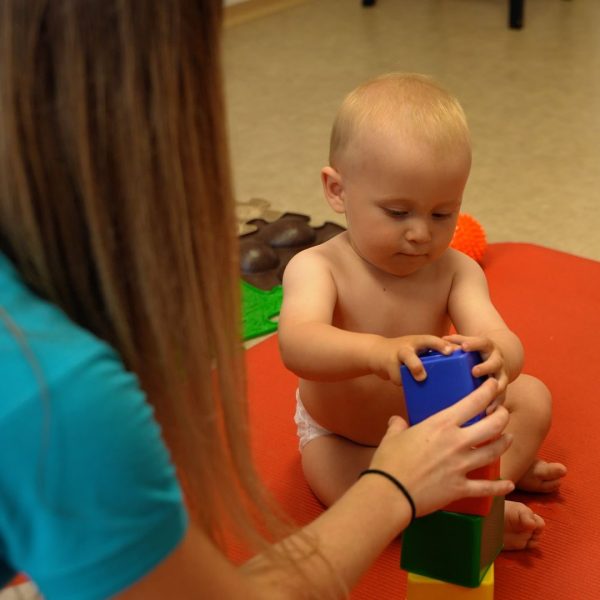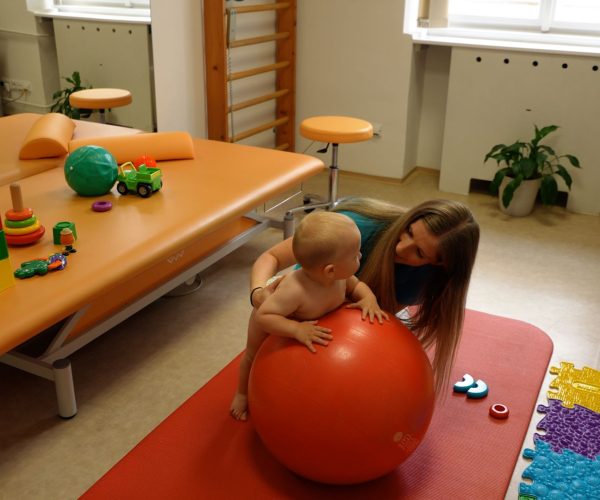Physiotherapy for infants and toddlers
About therapy
Already in the first weeks and months of life, the baby creates movement patterns that are the basis for its further motor development. If deviations from the ideal movement appear at this time, it is not advisable to expect the baby to grow out of it on its own. The child can gradually fix the non-ideal muscle interactions and build his other skills on them. Thanks to a comprehensive examination and appropriately chosen therapy, we can target deviations in development and eliminate them as soon as possible.

Development milestones that are good to check so that they happen at the highest quality are:
- 3rd month - the child should be on the axis and stable in space. In the prone position, he leans on his elbows (grazing the horses) and in the supine position, he keeps his legs and arms raised above the mat.
- 6th month - the child turns from the back to the stomach through both sides, in the position on the stomach it rises to the 2nd upright position (support on outstretched arms).
- 8th month - the child gradually gets on all fours through the inclined seats. What is important is climbing on all fours (8th-10th month).
- 10th month - the child begins to rise vertically by stepping (alternating legs), first goes around the furniture, then begins to walk independently (12-16 months).
During the therapy, we will be happy to advise you on how to best handle the baby in order to support its proper motor development. We can also discuss the (un)suitability of various aids or advise on the selection of boots.
What can physiotherapy help a baby with?
- Delayed psychomotor development
- Muscle tension disorders (hypertonia, hypotonia)
- Head predilection
- Umbilical hernia
- Abdominal diastasis
- Reflux
- Premature birth
- Orthopedic disorders (hip dysplasia, congenital leg defects)

